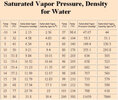Sorry, categorically not a water leak, without sounding dismissive. otherwise I'd have a damp and wet wall right now - and I don't.looks like a water leak to me, and there is a lot of water.
is it all round the house? higher in certain areas? or just in particular places? please stand back and take some wider pics, inside and out, and especially of the "highest point" of the damp, if there is one.
As you are in a terrace, I presume all the other houses were built with the same materials and techniques, at the same time. Are they all damp? Do they have damp patches, and do those patches coincide with, say, a kitchen, bathroom or downpipe?
does rainwater lie on the paving, or run towards the house wall?
please sketch the position of drains, gutter downpipes, gullies and manhole covers
and water pipes, sinks and taps, and especially the incoming supply pipe. Does it run under the hall floor? is the floor solid or wood with a ventilated void beneath? Is the floor wet?
have you got a water meter?
do you know where the outside and the inside stopcocks are?
do you have access to sharp young ears?
p.s.
why doesn't the condensate run into a drain?
As mentioned in original message - the issue appears during the cold winter period. That's it. It's currenty dry right now with just an existing tide line where it was previously wet.



